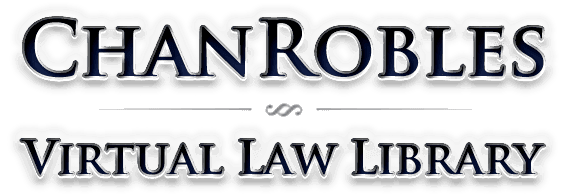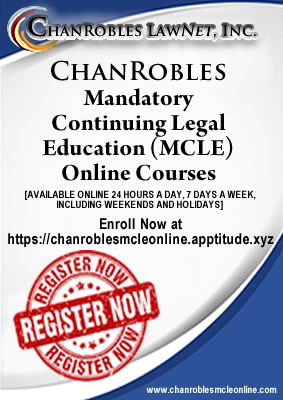20 C.F.R. Subpart A—Scope and Purpose
Title 20 - Employees' Benefits
(a) Subpart A establishes regulatory provisions that apply to the Welfare-to-Work (WtW) programs conducted at the State and at the local area levels. (b) Subpart B provides general program requirements applicable to all WtW formula and competitive funds. The provisions of this subpart govern how WtW funds must be spent, who is eligible to participate in the program, allowable activities and their relationship to TANF, Governor's projects for long-term recipients, administrative and fiscal provisions, and program oversight requirements. This subpart also addresses worker protections and the establishment of a State grievance system. (c) Subpart C sets forth additional administrative standards and procedures for WtW Formula Grants, such as matching requirements and reallotment procedures. (d) Subpart D sets forth the conditions under which the Governor may request a waiver to designate an alternate administering agency, sets forth the formula elements that must be included in the within-State distribution formula, the submission of a State annual plan, the factors for measuring State performance, and the roles and responsibilities of the States and the local boards or alternate administering agencies. (e) Subpart E outlines general conditions and requirements for the WtW Competitive Grants. (f) Subpart F sets forth the administrative appeals process. (g) Regulatory provisions applicable to the Indian and Native American Welfare-to-Work Program (INA WtW) are found at 20 CFR part 646. The purposes of the WtW program are: (a) To facilitate the placement of hard-to-employ welfare recipients and certain noncustodial parents into transitional employment opportunities which will lead to lasting unsubsidized employment and self-sufficiency; (b) To provide a variety of activities, grounded in TANF's “work first” philosophy, to prepare individuals for, and to place them in, lasting unsubsidized employment; (c) To provide for a variety of post-employment and job retention services which will assist the hard-to-employ welfare recipient and certain noncustodial parents to secure lasting unsubsidized employment; (d) To provide targeted WtW funds to high poverty areas with large numbers of hard-to-employ welfare recipients. The following definitions apply under this part: Act means Title IV, Part A of the Social Security Act, 42 U.S.C. 601–619. Adult means an individual who is not a minor child. Chief Elected Official(s) (CEOs) means: (1) The chief elected official of the sole unit of general local government in the service delivery area, (2) The individual or individuals selected by the chief elected officials of all units of general local government in such area as their authorized representative, or (3) In the case of a service delivery area designated under section 101(a)(4)(A)(iii) of JTPA, the representative of the chief elected official for such area (as defined in section 4(4)(C) of JTPA) or as defined in section 101 of the Workforce Investment Act of 1988. Competitive grants means those grants in which WtW funds have been awarded by the Department under a competitive application process to local governments, PICs, and private entities (such as community development corporations, community-based and faith-based organizations, disability community organizations, and community action agencies) who apply in conjunction with a PIC or local government. Department or DOL means the U.S. Department of Labor. Employment activities means the activities enumerated at §645.220(b). ETA means the Employment and Training Administration of the U.S. Department of Labor. Fiscal year (FY) means any 12-month period ending on September 30 of a calendar year. Formula grants means those grants in which WtW funds have been allotted to each Welfare-to-Work State, based on a formula prescribed by the Act, which equally considers States' shares of the national number of poor individuals and of adult recipients of assistance under TANF. The State is required to distribute not less than 85 percent of the allotted formula grant funds to service delivery areas in the State; and the State may retain not more than 15 percent for projects to help long-term recipients of assistance enter unsubsidized employment. Unless otherwise specified, the term “formula grant” refers to the 85 percent and 15 percent funds. Governor means the Chief Executive Officer of a State. IV-D Agency (Child Support Enforcement) means the organizational unit in the State that has the responsibility for administering or supervising the administration of the State plan under title IV-D of the Act (SSA). Job Training Partnership Act or JTPA means Public Law (Pub. L.) 97–300, as amended, 29 U.S.C. 1501, et seq. Local area means a local workforce investment area designated under section 116 of the Workforce investment Act of 1998, or a service delivery area designated under section 101 of the Job Training partnership Act, as appropriate. Local workforce investment board (local board) means a local board established under section 117 of the Workforce Investment Act, or a Private Industry Council established under section 102 of the Job Training Partnership Act (JTPA), which performs the functions authorized at section 103 of the JTPA, or an alternate administering agency designated under section 405(a)(5)(A)(vii)(II) of the Act and §645.400 of this part. Minor child means an individual who has not attained 18 years of age, or has not attained 19 years of age and is a full-time student in a secondary school (or in the equivalent level of vocational or technical training). MOE means maintenance of effort. Under TANF, States are required to maintain a certain level of spending on welfare based on “historic” FY 1994 expenditure levels (Section 409(a)(7) of the Act). PIC means a Private Industry Council established under Section 102 of the Job Training Partnership Act, which performs the functions authorized at Section 103 of the JTPA. Political subdivision of a State means a unit of general purpose local government, as provided for in State laws and/or Constitution, which has the power to levy taxes and spend funds and which also has general corporate and police powers. Private entity means any organization, public or private, which is not a local board, PIC or alternate administering agency or a political subdivision of a State. PRWORA means the Personal Responsibility and Work Opportunity Reconciliation Act of 1996, Public Law (Pub. L.) 104–193, which established the TANF program. SDA means a service delivery area designated under section 101 of the Job Training Partnership Act or a local area designated under section 116 of the Workforce Investment Act of 1998, as appropriate. Secretary means the Secretary of Labor. Separate State program means a program operated outside of TANF in which the expenditures of State funds may count for TANF MOE purposes. State means the 50 States of the United States, the District of Columbia, the Commonwealth of Puerto Rico, the US Virgin Islands, Guam, and American Samoa, unless otherwise specified. State TANF Program means those funds expended under the State Family Assistance Grant (SFAG), the basic block grant allocated to the States under Section 403(a)(1) of the Act. TANF means Temporary Assistance for Needy Families Program established under PRWORA. TANF MOE means the expenditure of State funds that must be made in order to meet the Temporary Assistance for Needy Families Maintenance of Effort requirement. Unemployed means the individual is without a job and wants and is available for work. WIA means the Workforce Investment Act of 1998 (Pub. L. 105–220)(29 U.S.C. 2801 et seq.). WtW means Welfare-to-Work. WtW State means those States that the Secretary of Labor determines have met the five conditions established at Section 403(a)(5)(A)(ii) of the Act. Only States that are determined to be WtW States can receive WtW grant funds. WtW statute means those provisions of the Balanced Budget Act of 1997 containing certain amendments to PRWORA and establishing the new Welfare-to-Work program, amending Title IV of the Social Security Act, (codified at 42 U.S.C. 601–619). (a) Local boards or alternate administering agencies, in coordination with CEO's should establish policies, interpretations, guidelines and definitions to implement provisions of the WtW statute to the extent that such policies, interpretations, guidelines and definitions are not inconsistent with the WtW statute or regulations or with State policies. (b) States should establish policies, interpretations, guidelines and definitions to implement provisions of the WtW statute to the extent that such policies, interpretations, guidelines and definitions are not inconsistent with the WtW statute or regulations. (c) The Secretary, in consultation with other Federal Agencies, as appropriate, may publish guidance on interpretations of statutory and regulatory provisions. State and local policies, interpretations, guidelines and definitions that are consistent with interpretations contained in such guidance will be considered to be consistent with the WtW statute for purposes of this section. The legislative changes made by the 1999 amendments: (a) Are effective on November 29, 1999, except as provided in paragraphs (b) and (c) of this section; (b) Provisions relating to the eligibility of participants for WtW competitive grants are effective on January 1, 2000; (c)(1) Provisions relating to the eligibility of participants for WtW formula grants are effective on July 1, 2000, except that expenditures from allotments to the States, as discussed in §645.135 of this subpart, must not have been made before October 1, 2000, for individuals who would not have been eligible under the criteria in effect before the changes made by the 1999 Amendments; (2) Provisions authorizing pre-placement vocational educational training and job training for WtW formula grants, at §645.220(b) of this part, are effective on July 1, 2000, except that expenditures from allotments to the States, as discussed in §645.135 of this subpart, must not have been made before October 1, 2000. States and local areas may expend matching funds beginning July 1, 2000. States and local areas may incur unpaid obligations within the normal course of business, beginning July 1, 2000, provided that the timing of those transactions ensures that drawdown of federal Welfare-to-Work formula funds to liquidate the obligations did not occur until October 1, 2000.
Title 20: Employees' Benefits
PART 645—PROVISIONS GOVERNING WELFARE-TO-WORK GRANTS
Subpart A—Scope and Purpose
§ 645.100 What does this part cover?
§ 645.110 What are the purposes of the Welfare-to-Work Program?
§ 645.120 What definitions apply to this part?
§ 645.125 What are the roles of the local and State governmental partners in the governance of the WtW program?
§ 645.130 What are the effective dates for the Welfare-to-Work 1999 Amendments?
§ 645.135 What is the effective date for spending Federal Welfare-to-Work formula funds on newly eligible participants and newly authorized services?


